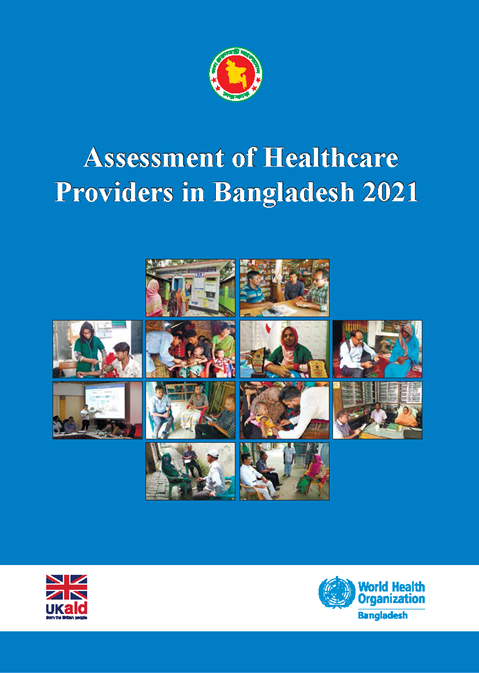Assessment of Healthcare Providers in Bangladesh 2021

Overview
The Government of Bangladesh (GOB) is committed to ensuring equitable access to healthcare for its citizens, regardless of demographic or geographic location. Availability, retention, and continuation of quality health workers is one of the major impediments. GOB has a plan to increase the production, upgrading, and retention of health workers. However, realistic information and projections of existing health workers in the country are needed. While reliable sources exist within the public system, there is no recent information on private and informal sector health workers. This assessment has been commissioned by the World Health Organization (WHO) in partnership with the Ministry of Health and Family Welfare (MOHFW) to map out active health workers, estimate their density per 10,000 population, and develop profiles of private and informal health workers with basic particulars.
The assessment was conducted using a quantitative method, facilitated by the Bangladesh Bureau of Statistics (BBS). The 2011 population census sampling frame by BBS was adopted in designing the sampling plan, which included 133 Primary Sampling Units (PSUs), randomly selected and provided by BBS to the MOHFW. The sample size was derived considering a 5% precision level and 90% response rate. A Technical Support Group (TSG) was formed within the MOHFW, with representation from the Directorate General of Health Services (DGHS), Directorate General of Family Planning (DGFP), Directorate General of Nursing and Midwifery (DGNM), Centre for Medical Education (CME), Bangladesh Bureau of Statistics (BBS), and WHO Bangladesh to guide the study team. Consultants from the consortium, in discussion with the TSG, developed and finalized the data collection plan and tools. Enumerators were selected and trained using these tools, with TSG members directly involved in the training. Enumerators collected data using Personal Data Assistants (PDAs) on the Open Data Kit (ODK) platform. Data collection was conducted from 16 September to 30 October 2019 by visiting each household within the selected PSUs. Upon completion, occupations were grouped according to the International Standard Classification of Occupations version 2008 (ISCO-08) and aligned with the Bangladesh Standard Classification of Occupations 2012 (BSCO-12), as recommended by the TSG on 26 November 2019. The data was then analyzed to produce descriptive statistics.
